The Advanced Centre for Biochemical Engineering (ACBE) is a singular facility in a UK university featuring a scaled bioprocessing pilot plant giving students and researchers access to unique resources
The Advanced Centre for Biochemical Engineering
The ACBE was built in the 1990s with a £20 million investment from industry, government and foundations. The ACBE comprises three different areas:
- Pilot Plant
- Teaching Laboratories
- Cell & Gene Therapy
- Synthetic Biology
ACBE Pilot Plant
What is the pilot plant?
The Pilot Plant is an intermediate scale, industrial manufacturing facility that is used use to bring products to commercialisation. It is located in the basement of the Bernard Katz building and we’re one of the few university departments in Europe to have one, and are unique in the United Kingdom. Pilot scale bioreactors, homogenisers and centrifuges give our students the hands on training and experience required to broaden their understanding. It allows them to consider the industrial perspective on commercialisation and adds value to their experience. .
What is a bioprocess?
A bioprocess begins with the growth a cell producing a product of interest, this could be a therapeutic protein e.g. Antibodies for cancer therapies, enzymes for bio-catalysis or non-protein products such as lipids from algae for use as Biofuels. Scaled bioprocessing requires cell growth in control vessels called fermenters /bioreactors; these are mixed vessels which provide optimal conditions (e.g. pH, temperature & dissolved oxygen) for liquid culture of microorganism & single cell eukaryotic cell lines (e.g. Mammalian cells). The pilot plant contains a wide variety of bioreactors. Small scale (250mL to 5L) units, which are often multiplexed to allow direct comparisons of different culture conditions for rapid optimisation & large scale units capable of producing volumes up to 100L. The facilities in the ACBE permit the culture of a wide variety of microorganisms including bacteria such as E.coli, yeasts such as P. Pastoris & Algae e.g. Chlorella sorokiniana. There is also a dedicated laboratory for the culture of mammalian cells. E.g. Chinese Hamster Ovary (CHO) cells.
How do you get your product from the cells?
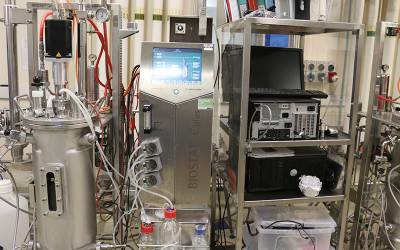
Centrifugal separators are used for the large scale solid liquid separation. Suspensions are fed into a rotating bowl where the solids settle out and a clarified liquid emerges. The ACBE houses 3 centrifugal separator as well as filtration rigs capable of liquid/solid separation.
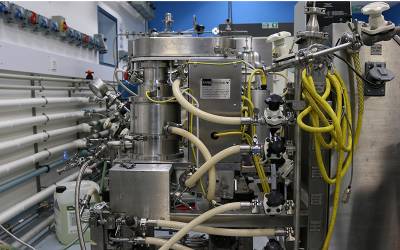
With microbial & algae cell types the product can often be found inside the cell (intracellular). The cells need to be broken open to release the product of interest. This often achieved mechanically in homogenisers, which there are several housed in the ACBE. In a homogeniser the cells are re-suspended in an appropriate aqueous solution & passed through a small orifice at very high pressure (200 bar This homogenate requires to be clarified to remove the solid fragments of cell left after homogenization process. These are often removed using a combination of filtration +) causing the cells to break open. and centrifugation described above.
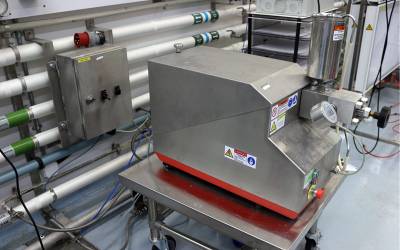
Once all of the solids have been removed the product, which is usually soluble, needs to be separated from other soluble components e.g. proteins, DNA, lipids etc. This is typically achieved using Chromatography.
What is Chromatography?
Chromatography uses tightly packed matrices of sub millimetre sized spherical particles (typically made of sepharose), which are chemically modified to allow binding of certain molecules or made in such a way that they have pores through them that allow separation by molecular size.
The process liquid containing the product of interest is fed through these columns to bind the product of interest & to allow unwanted chemicals to flow through (& then unbound in a process called elution). Alternatively chromatography can work in the opposite manner to bind contaminant. Several chromatography steps are run in series to purify the product away from other molecules, until the product is pure enough for its required use. Across the department as a whole we have wide variety chromatography equipment capable of purifying both small (mLs) to large volumes (litres).
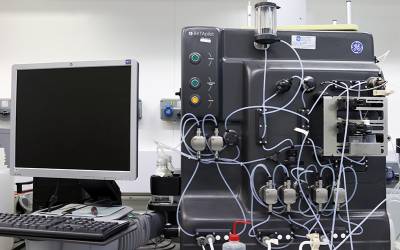
Quite often conditions used in chromatography leave the product of interest in a solution that is unsuitable for final usage e.g. Therapeutic protein solution eluted off a chromatography column may contain potentially toxic chemicals. We remove toxic chemicals & put the product of interest in an appropriate aqueous solution by using a process called buffer exchange. A filtration system called Tangential flow filtration (TFF) is often used. The TFF system uses a filter membrane with a pore size smaller than the product of interest. Here the liquid flows through the membrane allowing removal of molecules smaller than the pore size, with a proportion recycled (flowing parallel to the surface of the membrane) preventing build up of material on the membrane. By adding new buffer as the liquid is being filtered out the old buffer containing undesired chemical can be removed and be replaced by a buffer that is appropriate. The ACBE house TFF systems capable of performing concentration & buffer exchange of millilitres to litres worth of material.
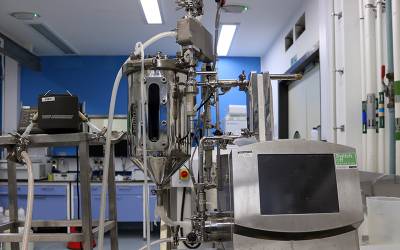
Often liquid formulations have limited shelf life with cold storage essential to maintain shelf life. Products can be freeze dried to maintain shelf life. The ACBE contains a freeze dryer capable of freeze drying hundreds of vials of material. The freeze drying process begins with filled vials of the target product in liquid being frozen. By application of a vacuum and increases in temperature the ice on samples can be removed by sublimation to leave lyophilised freeze dried solid.
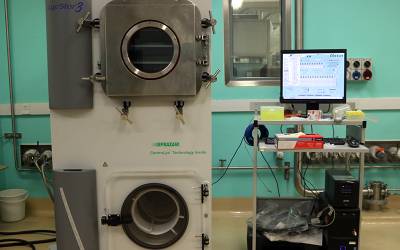
Within the pilot plant there is an array of liquid handling & XYZ movement robots; these can allow us to mimic some of the large scale operations described above using millilitres of material.
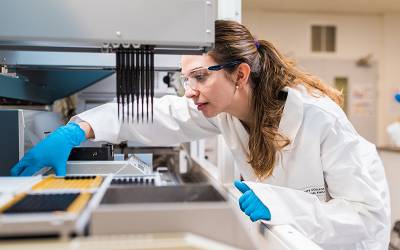
Teaching Laboratories
All undergraduate and masters students have extented experience supplementing their lectures with laboratory practicals. Laboratories such as the one shown here are used to teach students key engineering fundamentals such as oxygen transfer and fluid dynamics, as well as biochemical assays and protocols. Doctoral students are trained as demonstrators for lab practicals, which provides valuable teaching experience.
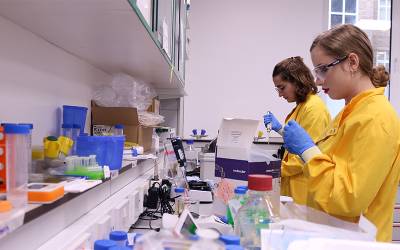
 Close
Close

